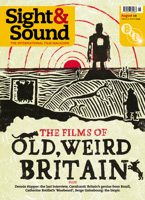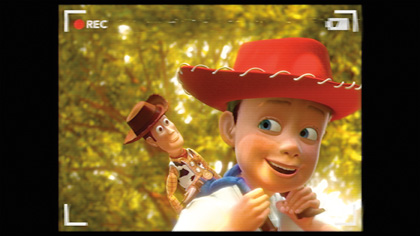Primary navigation

USA 2010

Reviewed by Jonathan Romney
Our synopses give away the plot in full, including surprise twists.
The toys’ beloved owner Andy, now in his teens, prepares to leave for college. He plans to take cowboy Woody with him and store the other toys in the attic, but they end up – with Woody in pursuit – at the seemingly idyllic Sunnyside day-care centre, where they are welcomed by strawberry-scented teddy Lots-o’-Huggin’ Bear, aka Lotso. While Barbie is romanced by boy doll Ken, the other toys are shocked to receive brutal treatment from the centre’s over-exuberant toddlers. When he protests, astronaut Buzz Lightyear discovers that Lotso rules Sunnyside with a rod of iron, aided by his doll henchman Big Baby and a security guard monkey. Lotso imprisons the toys and reprogrammes Buzz to guard them. Clown toy Chuckles explains that Lotso became embittered after his owner replaced him. Woody masterminds an escape plan, with Mr Potato Head and Barbie playing key roles. The toys – with Buzz back on their side, though now speaking Spanish – are cornered by Lotso, but Big Baby turns against the bear and the escape succeeds. The toys are threatened with incineration at a landfill site but the Little Green Men save the day by operating a mechanical claw. Lotso becomes a trucker’s mascot.
The toys are reunited with Andy, who finds them a new home with Bonnie, a little girl with a vivid imagination. Barbie and Ken turn Sunnyside into an idyllic holiday camp.
Despite its multiplicity of new characters – from lead players to crowds of extras – Toy Story 3 could easily be dismissed as the least ambitious Pixar film to date. Largely reworking the familiar and much-loved, it even rewrites ‘You’ve Got a Friend in Me’ in a Hispanic version – a pretty overt acknowledgement of its recycling ethic. And yet, while it’s no Monsters, Inc. (2001) or Up (2009), the film should not be written off, for it comes across at once as a tender, thoughtful valedictory and a symbolic renewal, with the old toys finally passed on into new hands. Toy Story 2 (1999) already had a high Kleenex factor as it explored the theme of faithful playroom friends abandoned when children grow older: here, too, there’s a decided streak of ‘Puff the Magic Dragon’ sentiment. Mortality and ageing are still more central (the continuity with Up is apparent): Andy’s manic dog is now a shambling, arthritic mutt, while the toys themselves are dumped in the unwelcoming Sunnyside day-care centre when Andy goes off to college.
But the theme of abandonment takes on a more sombre edge in the story of Lotso, a Care Bear gone over to the dark side (the explanation of his embitterment smartly parodies the convention of psychological backstory). True to Pixar’s discreet gothic streak, there are plentiful chilly frissons here: the automaton-like Big Baby echoes the Frankenstein-like toys of the first film, while a downright terrifying monkey shrieks and bashes its cymbals at every attempted escape (watch its alertly flickering eyes – a superb example of Pixar’s less-is-more approach). And there’s a genuinely alarming climax, as the toys seem to face (indeed, to accept) death – only to be saved by, quite literally, a deus ex machina, a new incarnation of the Claw worshipped by the green aliens.
As ever, the cultural in-jokes are carried off lightly: there’s an enjoyable meet-cute between Barbie and Ken (“It’s as if we were made for each other!”) and some relishable camp riffs on his narcissism and period wardrobe (Barbie gets the upper hand by threatening to rip his 1967 vintage Nehru jacket).
Toy Story 3 doesn’t offer the second episode’s confident sense of advance. But if the film is content to recycle, that’s because, like 2008’s WALL•E, it has an eminently green message: it’s better to reuse than to throw away if there’s life still in old material, old toys, old ideas. The film opens with Buzz, Woody and co in a rip-roaring cross-genre chase sequence that starts as a Western, turns into road-movie action, then into science fiction, before the episode is revealed to be a fantasy improvised by the still-young Andy. The theme of childish inspiration finally comes full circle when the grown-up Andy introduces the toys, one by one, to their new owner Bonnie. The little girl represents demographic replenishment, a new audience for Pixar – the five-year-olds who discovered the first film in 1995 are themselves college age now – but most importantly, she stands for the primacy of imagination. The old pals couldn’t have found a better owner than this eccentrically inventive child who makes her playthings the stars of her own repertory theatre, headed by the grandly thespian hedgehog Mr Pricklepants: “We do a lot of improv here,” one of the company announces. Bonnie is a touching tribute to the unbridled childhood imagination – quite clearly, the kind of child who grows up to be a Pixar animator.
An animated crowd: Isabella Kaminski reports on the Annecy Animation Festival (online, June 2010)
WALL•E reviewed by Andrew Osmond (August 2008)
Animation timeline (August 2006)
A Bug’s Life reviewed by Leslie Felperin (February 1999)
Toy Story 2 reviewed by Kim Newman (March 2000)